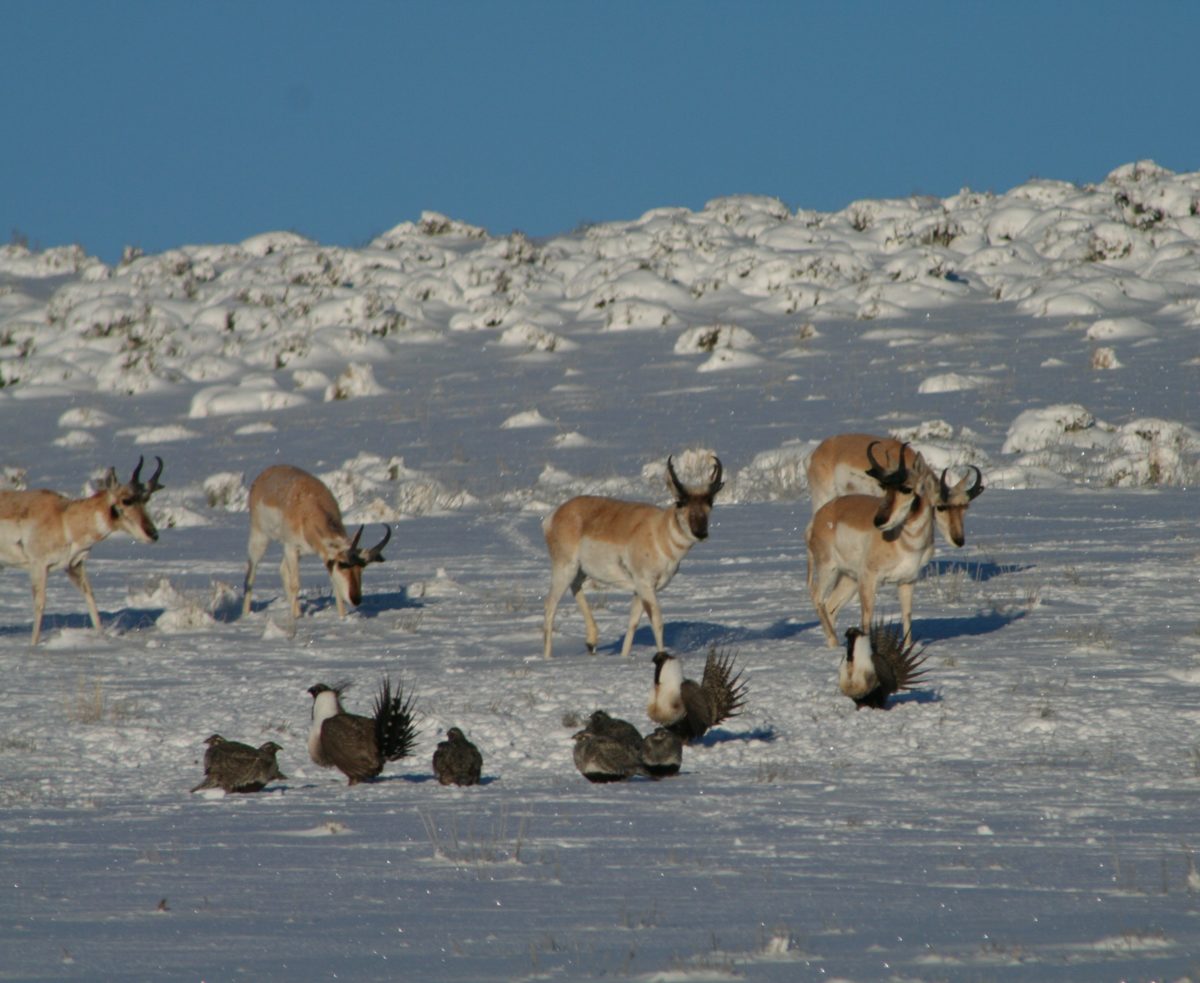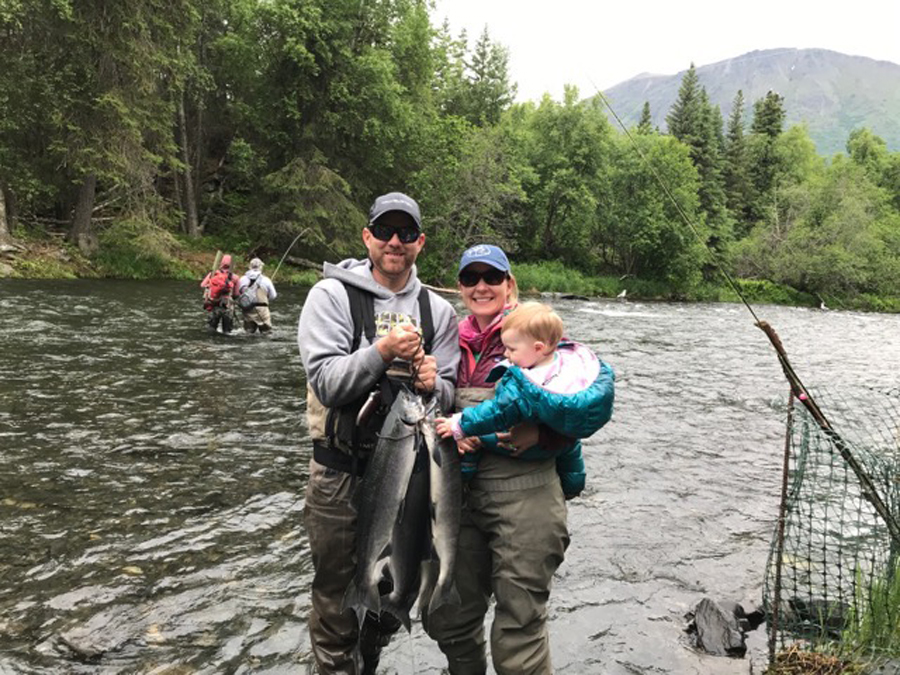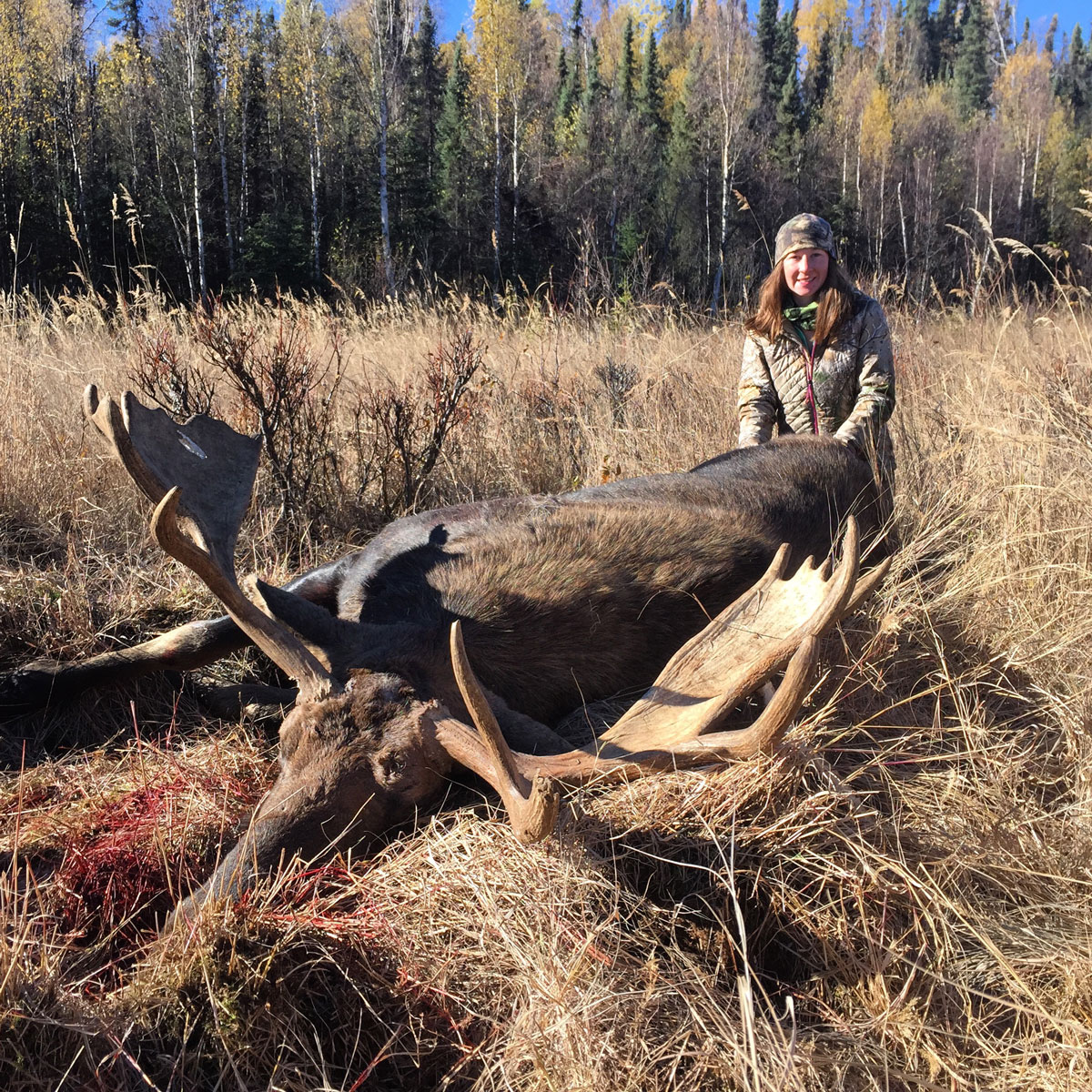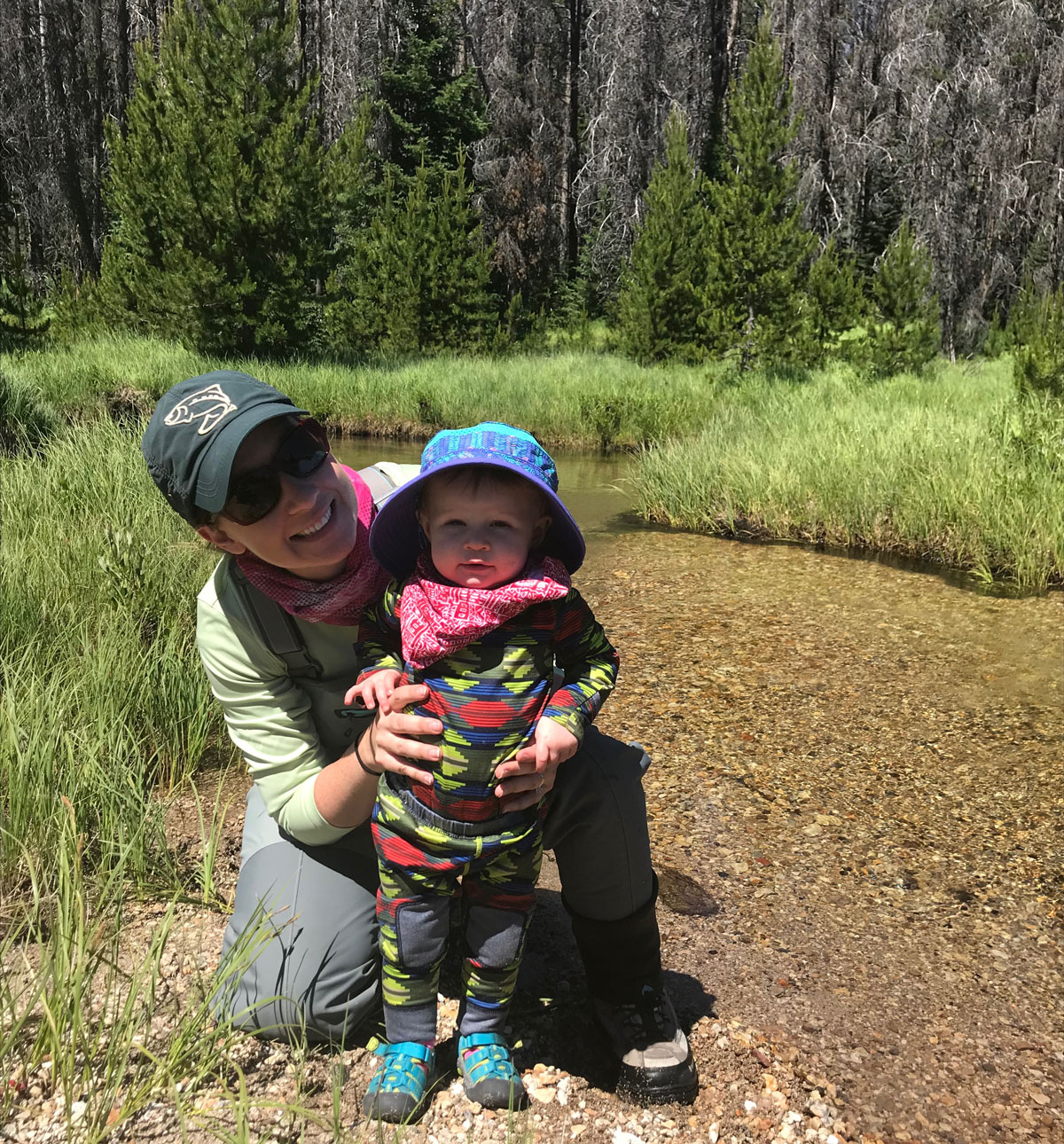checking-saline-seep-CRP-practices-by-USDA-NRCS-Montana-1200-web
Do you have any thoughts on this post?
The BLM’s final revised sage grouse conservation plans will play a major role in determining the future of the sagebrush ecosystem, which supports more than 350 species
UPDATE: On October 16, 2019, U.S. District Court Judge B. Lynn Winmill ruled that the Bureau of Land Management failed to fully analyze how sage grouse would be affected by changes in the land-use plan amendments finalized in March 2019. The TRCP and several partner organizations supported some targeted changes when the administration announced re-opening the plans, but cautioned against a major overhaul.
The preliminary injunction blocks the BLM from implementing the 2019 amended plans and reverts management actions back to the 2015 conservation plans that convinced the U.S. Fish and Wildlife Service not to list the bird for Endangered Species Act protections. Activities like oil and gas development can proceed while this injunction is in place, but projects must comply with all directives of the 2015 BLM plans, including prioritizing areas outside sage-grouse habitat for development.
Since the Trump Administration decided to revamp conservation plans in 2016, leasing in sage grouse priority habitat has increased tenfold. Although the injunction does not invalidate lease sales made during this period, it certainly opens them to legal challenges.
Read on for the original post on the revised BLM plans.

The Bureau of Land Management has finalized its revised plans to conserve greater sage grouse populations across millions of acres of public land in several Western states. The administration’s approach replaces previous BLM plans, which helped to give the U.S. Fish and Wildlife Service confidence that the species did not warrant listing as threatened or endangered in 2015.
While the state-specific plans maintain the basic framework of the originals, which were created through years of collaborative effort, the new plans do not provide the same safeguards for certain sagebrush habitats. There is more potential for development and mineral extraction within sage grouse habitat in the new plans. Combined with the Department of Interior’s policy shift on mitigation, this could be cause for concern.
“The finalized plans are a mixed bag, with some changes addressing legitimate requests from the states to help align with their conservation approaches and other changes stripping back protections for core sage grouse habitat and creating more uncertainty for the West,” says Whit Fosburgh, president and CEO of the Theodore Roosevelt Conservation Partnership. “Success will ultimately come down to implementing these new plans and never wavering from an approach that produces positive results for sage grouse habitat and populations. We will continue working with the BLM, Western states, industry, and local partners to ensure that happens.”
The final plans eliminate focal areas, a subset of about 11 million acres of priority habitat on BLM land that would have been permanently withdrawn from any potential mineral extraction in the 2015 plans. The original no-surface occupancy policy remains—meaning infrastructure for development cannot be built on priority habitat—but the revised plans also give the BLM more flexibility to waive these protections in certain cases.
The previous plans also more clearly steered oil and gas leasing away from the best sage grouse habitat, but now the BLM is offering extensive tracts of priority habitat to willing buyers at a rapid pace rather than favoring non-habitat areas.
“We’ve seen a dramatic shift away from prioritizing energy leasing away from the best habitat and are now witnessing leasing of some of the very best remaining tracks of unfragmented land,” says Dr. Ed Arnett, chief scientist for the Theodore Roosevelt Conservation Partnership. “We realize that leasing does not equate to development, and operators still must abide by stipulations for priority habitat, but it just makes good sense to steer disturbance toward non-habitat or stagger the timing of development in and around grouse habitat.”
Mitigation also remains a sticking point, now that the Department of the Interior maintains that it lacks legal authority to require developers to pay for any negative impacts to habitat. (Quick tip: Here’s a metaphor that helps explain mitigation using beer!) This shifts the onus of regulation to the individual states, each of which has different mitigation standards and legal requirements. The states now must ensure their mitigation approaches are not only effective at curbing habitat loss, but also at holding all developers accountable on a level playing field.
“Mitigation was a fundamental component of the 2015 plans that helped reach the not warranted decision,” says Steve Belinda, executive director of the North American Grouse Partnership. “Without offsetting unforeseen or unavoidable impacts – it’s loss of habitat over time, plain and simple.”
It will be important to move forward swiftly with implementation of these new plans to conserve sagebrush habitat and begin tracking the effectiveness of conservation measures.
“Whatever approach we take, the outcome for sage grouse and sagebrush habitat will need to be legally defensible,” says Dr. Steve Williams, president of the Wildlife Management Institute and former director of the U.S. Fish and Wildlife Service. “If there is not enough regulatory certainty, if there is too much flexibility leading to negative impacts on habitat, and it is determined that our actions were not effective, we may end up facing a legal challenge deeper than the one we started from years ago. At that point, it’s difficult to see a future where sage grouse aren’t reconsidered for listing.”
The U.S. Forest Service continues to finalize its own amendments to eight forest plans dealing with sage grouse conservation in the West. The public comment period for proposed amendments closed on January 3, 2019, and the final revisions will be out in the coming months.
Photo by Jennifer Strickland, USFWS
This blog was originally posted on March 15, 2019, and was updated on October 23, 2019.
TRCP’s “In the Arena” series highlights the individual voices of hunters and anglers who, as Theodore Roosevelt so famously said, strive valiantly in the worthy cause of conservation
Hometown: Cascade, Montana
Occupation: Freelance writer
Conservation credentials: Educated audiences on conservation issues as a TV news reporter; champions showcasing better hunting and fishing ethics on social media
Jackie Holbrook is the kind of outdoorswoman we want to be—whether she’s hiking, scouting, and fishing with her young daughter strapped to her back or reaching out to a new generation of bowhunters. Holbrook was raised in Helena, Mont., spent ten years challenging herself in the last frontier of Alaska, and has dedicated much of her career to sharing important conservation stories through her journalism. Here is her story.

My dad took me on fishing and hunting adventures from the time I was toddler, and I completed my hunter’s safety course at 15 years old—I was the only girl in the class. I will never forget the experience of shooting my first deer with my dad that year.
I got hooked on fly-fishing in college and met my husband after I moved to Alaska, which opened up an amazing new world of hunting and fishing opportunities.
I have fantastic memories of landing a 30-inch rainbow trout on the fly, shooting a moose with my bow, and coming face-to-face with bugling bulls, but getting engaged on a three-week hunting trip is probably my most memorable adventure in the outdoors. During the trip, we bowhunted caribou and brown bears and watched a wolverine race up the side of a mountain. My husband harvested two wolves, and I shot my first moose on the final morning of our trip. It was an amazing Alaska adventure.

None of these adventures would be possible without conservation.
Conservation is also a big part of my life and career. My “beat” as a former TV reporter was hunting and fishing. Most of my coworkers thought those issues were boring, but to me there was nothing more important than informing people about conservation issues. Now, as a freelance writer, a lot of my work is focused on recruiting bowhunters and giving them the tools to succeed.
I’m shocked by how many people are opposed to hunting without having a basic understanding of the facts. I think social media has made this attitude worse. Hunters are getting bullied online, especially young women, and I’m afraid this will deter younger generations from taking up the tradition.
Hunters are essential to conservation and that message often gets misrepresented. I think widespread misinformation can cause a lot of damage to the public perception of hunters. I also think this anti-hunting movement is dangerous to conservation when public opinion begins to overturn sound science in wildlife management decisions.

After a decade in Alaska, I moved back to Montana because I missed the hunting and fishing here. There is nowhere I would rather be in September than in elk country chasing bugling bulls. Now, we live along the Missouri River, and I love being able to walk out the front door and throw a fly at hungry trout with my toddler on my back.
Motherhood reaffirmed my commitment to conservation. Watching the world through the eyes of my daughter reminds me of its magic. My 20-month-old laughs and yells “fish” when my husband I are fighting fish. She also makes a pretty perfect elk bugle. Hunting, fishing, and the outdoors aren’t hobbies—they’re a way of life for people. At such a young age she’s already enjoying the gifts of conservation, and I want her to grow up with the same clean water, public lands, and healthy wildlife populations that I had.
Do you know someone “In the Arena” who should be featured here? Email info@trcp.org for a questionnaire.
Sportsmen and women applaud agency’s decision to conserve wildlife habitat and recreational opportunities
The Humboldt-Toiyabe National Forest has determined that 54,000 acres in Nevada’s Ruby Mountains will not be made available for oil and gas exploration.
The Forest Service released its Decision Notice and final Environmental Assessment today.
Forest Supervisor Bill Dunkelberger noted there was limited geologic potential for drilling in the area under consideration and there are concerns regarding potential harm to wildlife and scenic values.
The Ruby Mountains are home to Nevada’s largest mule deer herd, critical populations of the threatened Lahontan cutthroat trout, and numerous other fish and wildlife species. In addition, they are a popular destination for outdoor enthusiasts of all types.
Earlier this year Senator Catherine Cortez Masto (D) introduced a bill to prohibit oil and gas leasing on National Forest lands in this area.
“The Rubies offer some of Nevada’s finest hunting and fishing opportunities, and we’re glad that the agency has listened to the overwhelming public opposition to their development,” said Carl Erquiaga, the Nevada Field Representative for the Theodore Roosevelt Conservation Partnership. “While today’s announcement is very encouraging for those of us who care about these mountains, a permanent solution is needed to conserve this world-class hunting destination, and we encourage Congress to move without delay to pass the Ruby Mountain Protection Act.”
Photo credit: Tom Hilton
Whit Fosburgh testifies on Capitol Hill about opportunities to support the outdoor recreation economy.
Whit Fosburgh, president and CEO of the Theodore Roosevelt Conservation Partnership, testified on Capitol Hill today to highlight the contributions that hunters and anglers make to the outdoor recreation economy and conservation.
Fosburgh appeared before the Senate Energy and Natural Resources Committee to share the perspective of sportsmen and women on habitat and public access.
“The loss of access to the outdoors and public lands has happened over decades, and it won’t turn around without a concentrated effort by Congress and the administration,” said Fosburgh. “Nearby access opportunities disappear when fish and wildlife habitat is lost. But lost access doesn’t always mean a locked gate. When fields in northern Virginia are turned into subdivisions or shopping malls, habitat and access are lost. Access is lost when a South Dakota CRP field is converted to row crops. Access is lost when a waterfowl marsh in Louisiana disappears into the Gulf of Mexico because we’ve built levees along the Mississippi River that starve those wetlands of the sediments they need to survive. In Florida, boat launches sit empty in the face of algal blooms and red tides.”
Fosburgh also noted that demographic changes have had profound effects on access, especially in the West, where 72 percent of hunters depend on public lands for their hunting access.
“For much of the last century, a knock on the door and a friendly smile were often all it took to access or cross private lands in pursuit of fish and game,” said Fosburgh. “But in recent years, many working farms and ranches have changed hands. Some were subdivided, while others became second homes or recreational properties where ‘no trespassing’ signs and locked gates replaced de facto open access.”
Fosburgh called on Congress to take action by:
Fully funding the Land and Water Conservation Fund. Congress recently permanently authorized the LWCF, but for years the nation’s best conservation tool has been only funded at about 50 percent.
Directing the Forest Service and BLM to digitize all easements into electronic databases. Right now, neither the Forest Service nor the BLM are equipped to identify where they do or do not hold access across private lands, or where they should prioritize access acquisitions. This is because many of the agencies’ access easement records are still held on paper files at local offices and cannot be integrated into digital mapping systems that are foundational to public lands management in the twenty-first century.
Addressing the maintenance backlog on public lands. The maintenance backlogs are a staggering $11.6 billion for the National Park System; $2.2 billion for the U.S. Fish and Wildlife Service and Bureau of Land Management; and $5 billion for the Forest Service. The backlog manifests itself in degraded roads, trails, and campgrounds, all of which directly relate to quality access.
Including nature-based solutions in an infrastructure package. The upcoming Highway Bill is an opportunity to not only promote recreational access by investing in roads, trails, boat launches, and campgrounds but also by securing resources for migration crossings, aquatic connectivity, and barrier islands to protect coastal communities.
Taking recreational access into consideration in the BLM land disposal process. For the past year, 22 hunting, fishing, and conservation organizations have been encouraging the Department of the Interior to require that public access for outdoor recreation be considered when the BLM evaluates lands for disposal. We request that this change not only be administrative but also codified in statutory law.
Addressing climate change with smart public lands policies. The biggest threat to quality access and the outdoor economy is climate change. Hunters and anglers are on the front lines of our changing climate, with shifting migratory patterns, fishing closures due to heat, low flows, or algae blooms, invasive species, and longer wildfire seasons. Our nation’s public lands, if properly funded and managed, can serve as a bulwark against the worst impacts of climate.
Fosburgh’s entire testimony is available HERE.
Read about Christy Plumer’s testimony at a House subcommittee hearing, which also took place this week.
Theodore Roosevelt’s experiences hunting and fishing certainly fueled his passion for conservation, but it seems that a passion for coffee may have powered his mornings. In fact, Roosevelt’s son once said that his father’s coffee cup was “more in the nature of a bathtub.” TRCP has partnered with Afuera Coffee Co. to bring together his two loves: a strong morning brew and a dedication to conservation. With your purchase, you’ll not only enjoy waking up to the rich aroma of this bolder roast—you’ll be supporting the important work of preserving hunting and fishing opportunities for all.
$4 from each bag is donated to the TRCP, to help continue their efforts of safeguarding critical habitats, productive hunting grounds, and favorite fishing holes for future generations.
Learn More
